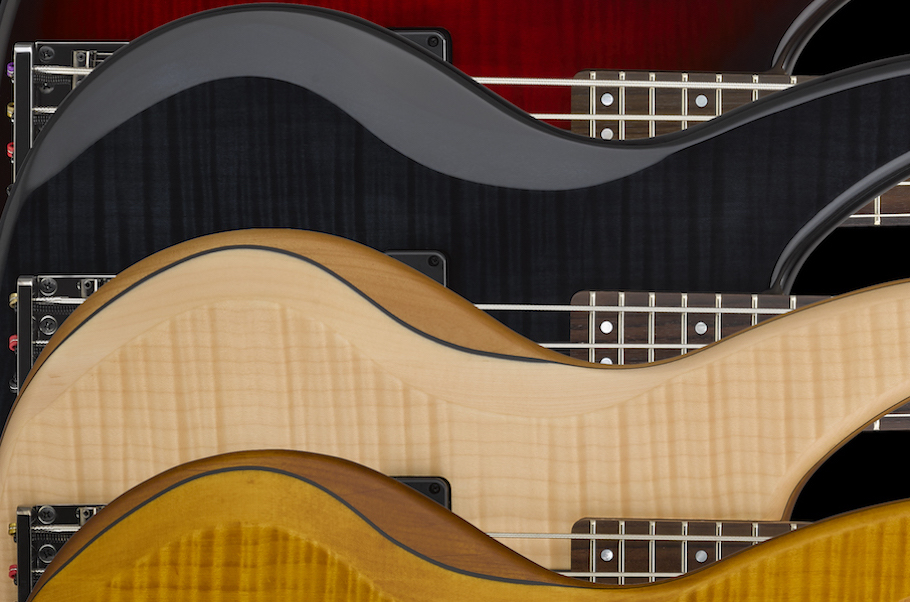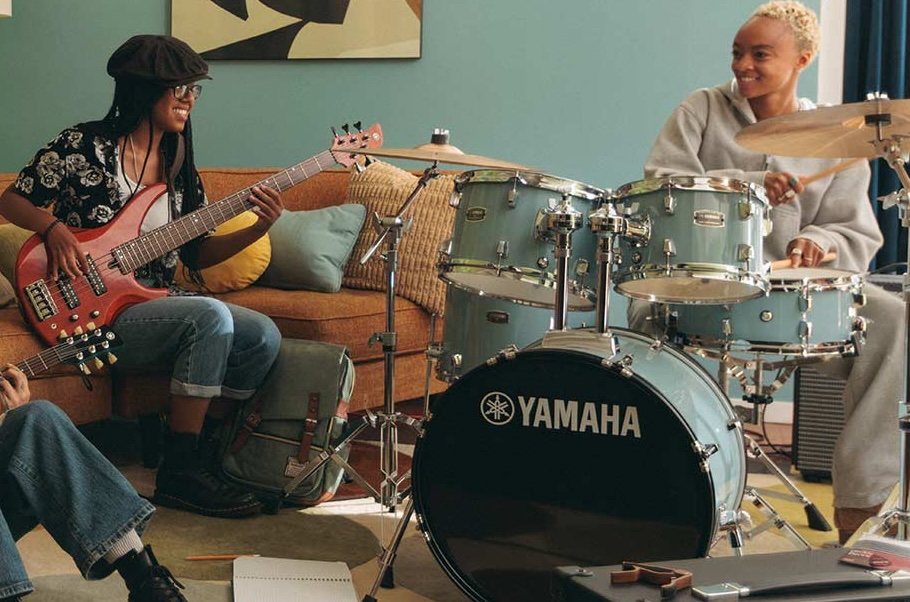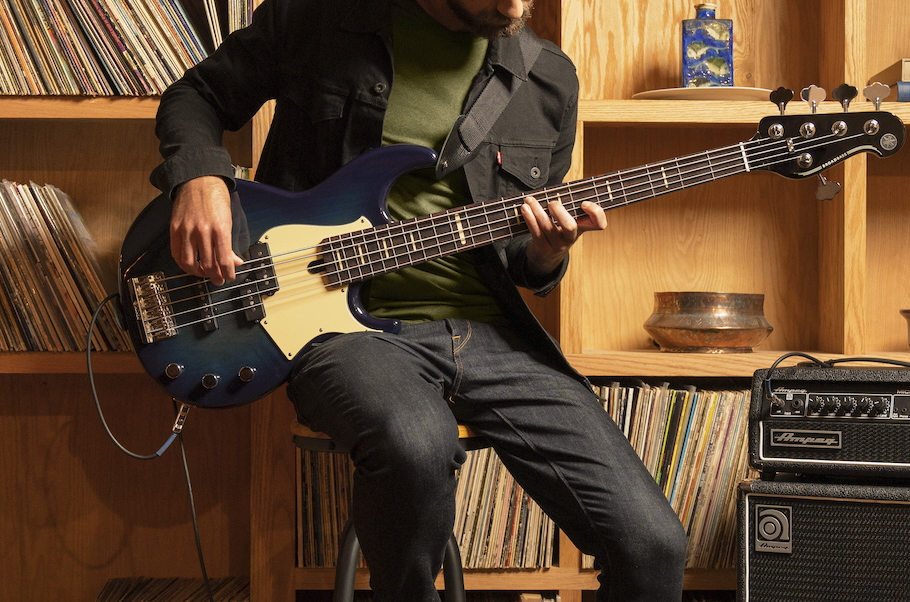Bass Picking-Hand Placement and Technique
Location, location, location.
One of the easiest and most direct ways to modify your bass sound is with your picking hand. Changing its placement and/or exploring alternative picking/plucking techniques can be a fun and productive way to quickly access other tonal worlds without touching your amp or stepping on a pedalboard. In this posting, we’ll show you how.
ZONES OF INTEREST
Start by placing your picking hand as far away from your bass’s neck as possible, right near the bridge. Pluck any note using your index and middle fingers. Notice how tight the string is, how thin-sounding the notes are, and how much rounder the tone becomes as you move toward the neck and onto the fretboard with your plucking hand. You can learn to use these tones strategically: Play near the bridge and bridge pickup for focused tone, near the neck and neck pickup for fuller tone, and directly over the fingerboard for the tubbiest tone.
As you can see in the video below, moving the picking hand and alternating between plucking and playing with the thumb causes significant tonal variation and inspires slightly different E minor choices on a vintage Yamaha BB2000 with old strings and the tone knob halfway up. For this and all following videos, the tone selector switch will remain in the middle, with both the neck and bridge pickups making an equal contribution to the sound.
HEAD ON UP TO THE FRETBOARD
As you’ve undoubtedly noticed, the tension of each string is greatest (tightest) close to the bridge and looser as you move toward the neck. What happens, then, if you move your plucking hand right onto the fretboard? Gooey goodness, of course!
If you’re looking for clarity and definition, this isn’t the tone for you. In conjunction with your fretting hand and tone knob, however, this approach can do a convincing simulation of certain synth bass, fretless and upright tones.
Start by turning your tone knob all the way down so that the highs are completely rolled off and your bass is at its thumpiest. Place your plucking hand near the end of your fretboard and play the A on your E string while pressing down all the strings with your plucking hand. Use your fretting hand to slide into notes, bend strings, and play double-stops and chords.
In the first of the two videos below, playing over the fretboard with the tone knob rolled off all the way results in a warm, fretless-like tone for this B♭ minor part.
In the second video, we revisit the previous E minor flavor, but this time, we turn the tone knob up to restore the high frequencies and move the plucking hand a little closer to the headstock.
Also check out this video for a demonstration of how moving closer to the bridge or neck affects bass tonality when using a pick.
SLING THAT THUMB
Instead of playing with your index and middle fingers, try using your thumb to pick the notes instead. It might be awkward at first, but you’ll notice that playing with your thumb allows you to put weight behind the notes, plus it gives you a more focused tone. If you listen closely, you may find that your index and middle fingers have two subtly different tones, and that your thumb can be consistent. With practice, you can gradually pick up speed with just your thumb. Go easy in the beginning — your thumb may not have the callouses that your other fingers have. In the video below, watch as the thumb and fretting-hand hammer-ons do most of the work on this B♭ minor groove, occasionally joined by the index finger. Other thumb-playing approaches, such as the “chucking” technique pioneered by Bernard Edwards, are pathways to new tones, too.
THE PALM MUTE
Here’s a sure-fire way to old-school bass tone. In the 1950s and ’60s, some electric basses came with flat-wound strings and foam mutes, and the resulting sound — percussive and somewhat staccato — became associated with James Jamerson and other early bassists. (Listen to Marvin Gaye’s “What’s Going On” and then the isolated bassline to hear a great example of the signature Jamerson sound.) This muted approach can also be used to evoke the tone of other bass instruments, such as synth bass, upright bass and electric uprights like the Ampeg Baby Bass.
To add this sound to your vocabulary, start by placing the left side of your hand against the strings and plucking the open E string with your thumb. Notice how fast the note decays, and experiment with palm pressure to hear the variations that are possible. In the video below, notice how the notes of an E minor bassline plucked by the thumb are short and fat. Be sure to explore some of the many YouTube videos on palm-muting such as this one.
FOCUSED VS. FRETLESS
Moving your plucking hand and/or using your thumb can make all the difference to your tone. Alternating between focused and fretless flavors, for example, can be accomplished by simply changing the placement of your plucking hand, as shown in the video below.
It’s great to have tonal options like these at your command without having to use effects. Have fun and experiment!














